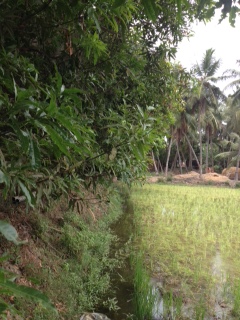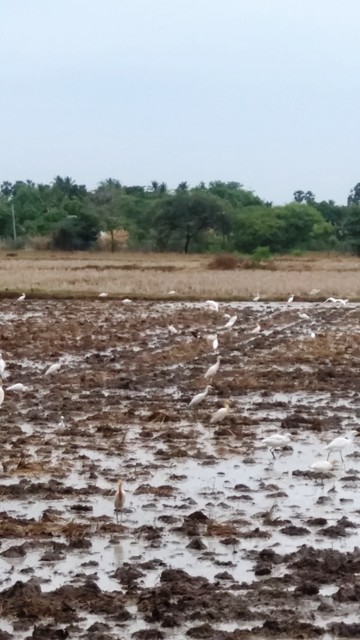Fish Culture in Paddy Field
-K. Amina Bibi
Karaikal is a small coastal enclave which was formerly part of French India. Together with the other former French territories of Pondicherry, Yanam, and Mahé, it forms the Union Territory of Puducherry. Karaikal is bounded on the North and South by Nagapattinam
district of Tamil Nadu state, on the west by Tiruvarur district (also belonging to Tamil Nadu), and on the East by the Bay of Bengal. The enclave is located 140 km south of the city of Pondicherry, 158 km east of Trichy and is known for its rich cultural heritage.
Forming part of the fertile Cauveri delta, the region is completely covered by the distributaries of Cauveri. Covered completely by a thick mantle of alluvium of variable thickness, the lie of the region is flat having a gentle slope towards the Bay of Bengal
in the east. (Source: Wikipedia)
Mr. Chandra Kumar, aged 38 is an engineer, resigned his highly paid job to do Organic Agriculture in Andoor Village of Karaikal District, Puducherry Union Territory. He wanted to take up SOMETHING DIFFERENT in Organic Farming.
A social media video on Fish Culture in Paddy field of Philippines made him sleepless and made him search more on this. After exploration on this he decided to venture his own model. He dug trench of two feet around his field and filled with canal water. He
introduced fish fingerlings from the canal; it was a mixture of traditional breed. Also he preferred to plant tradition paddy variety, Mappillai Samba, a red rice variety which can withstand standing water and do not demand chemical fertilizers. It responds
well to organic inputs and gives good yield.

“Coastal saline soil extends from the main sea coast to a few or even 50 km at places interior to the main land. The ground water table under these soils is generally present at a shallow depth and contains high amount of soluble salts. These salts accumulate
on the surface of the soil due to capillary rise of saline groundwater during dry periods of the year rendering the soil highly saline. Almost the entire area of the rain fed coastal saline soil is mono cropped in nature. The major agricultural crop of kharif
is rice, grown during monsoon period when soil salinity is low. During the rest of the year, the land usually remains fallow due to high salt content of the soil.” This is how Tamil Nadu Agricultural University (TNAU), Coimbatore details about the coastal
ecosystem.

Chandra Kumar’s trenches have helped to leach out salts from the field and get accumulate in the trenches and the salt level is not harmful to fishes. Advantageously, the fish fed on the organic inputs like farm yard manures, vermicompost, green leaf manures
have turned the water into nutrient rich solution for the paddy to grow up on par with chemicals fed agriculture. The fishes grow into half to one kg in 150 days (duration of Mappillai Samba). He harvests the fish a week before paddy harvest and it is a bonus
of double income.

Fish culture along with Paddy gives an emotional satisfaction of producing food (paddy and fish) organically. Due to this reason both paddy and fish fetch better price than others in that area. Being fully Organic, the cost of inputs are drastically reduced
for the entire cropping season, except the trench making done at the time of land preparation. Economical utilization of land is done with which he gets dual income in an agricultural season. At the cost of sincere and personal attention every day as it is
an innovation and have no other bench marks to look upon.
K. Amina Bibi is Agriculture Officer, Karaikal. (Pondicherry) and can be contacted at bornagainamina@gmail.com, mobile 9443525661